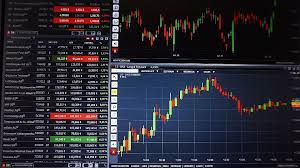
Mastering Forex Trading: Professional Guidelines for a Winning Framework
Forex trading can be a lucrative venture for savvy investors, but it is not without its pitfalls. Whether you’re a novice trader or a seasoned professional, having a robust framework is essential for long-term success. In this article, we will explore the professional guidelines that can help you establish a winning Forex trading framework. This guide will cover essential strategies, tools, and best practices to enhance your trading performance. For additional insights, visit forex trading framework professional guidelines forex-level.com.
Understanding the Forex Market
Before you dive into trading, it’s crucial to understand the mechanics of the Forex market. Forex, or foreign exchange, is the global marketplace for trading national currencies against one another. The market is decentralized and operates 24 hours a day, making it accessible at any time. Currency pairs, such as EUR/USD, represent the exchange rate between two currencies and are the fundamental building blocks of Forex trading.
The Importance of a Trading Strategy
A well-defined trading strategy is the cornerstone of successful Forex trading. It involves setting clear goals, determining your risk tolerance, and establishing entry and exit points. Here are some key components to consider when developing your trading strategy:
- Market Analysis: Use both technical and fundamental analysis to inform your trading decisions. Technical analysis involves studying charts and price patterns, while fundamental analysis focuses on economic indicators and news events.
- Risk Management: Implement risk management techniques, such as setting stop-loss orders and limiting the amount of capital you risk on each trade.
- Trade Execution: Develop rules for trade execution, including what conditions must be met before entering or exiting a trade.
Building Your Trading Plan
Your trading plan is a comprehensive document that outlines your strategy and approach to trading. Here’s how to build an effective trading plan:
- Define Your Trading Goals: Set specific, measurable, attainable, relevant, and time-bound (SMART) goals for your trading performance.
- Choose Your Markets: Decide which currency pairs you will trade and why. Consider factors such as volatility, liquidity, and economic stability.
- Establish a Trading Schedule: Determine when you will trade based on market hours and your personal availability. Consistency is key.
- Track Your Performance: Keep a trading journal to record your trades, reasoning, and outcomes. Analyzing your past performance can help you refine your strategy.
Utilizing Analysis Tools
In the world of Forex trading, data is king. Utilizing various analysis tools can give you a competitive edge. Here are some widely used tools that professional traders leverage:

- Charting Software: Platforms like MetaTrader 4 and TradingView offer advanced charting capabilities, indicators, and drawing tools.
- Economic Calendars: Stay updated on upcoming economic events that may impact currency prices. Websites like Forex Factory provide comprehensive economic calendars.
- News Aggregators: Utilize tools that aggregate news from multiple sources to stay informed about global economic trends and events.
The Role of Psychology in Trading
Trading in the Forex market is not just about numbers; it’s also about mindset. Successful traders understand the psychological aspects of trading. Here are some important points to consider:
- Emotional Discipline: Fear and greed can cloud judgment. Practice emotional discipline to stick to your trading plan, even in volatile conditions.
- Patience: Good trades take time. Avoid the urge to chase the market or make impulsive decisions.
- Continuous Learning: The market is always evolving. Stay updated with new strategies, tools, and market conditions.
Risk Management Techniques
Effective risk management is critical for long-term profitability in Forex trading. Here are some key techniques to employ:
- Position Sizing: Determine the size of your position based on your risk tolerance. A common rule is to risk no more than 1-2% of your trading capital on a single trade.
- Stop-Loss Orders: Utilize stop-loss orders to automatically close your position if the market moves against you, minimizing potential losses.
- Diversification: Avoid putting all your capital into one trade or currency pair. Diversifying can help reduce risk.
Evaluating and Adapting Your Strategy
The Forex market is constantly changing, which means your trading strategy should be dynamic as well. Regularly evaluate your performance and adapt your strategy as needed. Here are ways to do this:
- Analyze Your Trading Journal: Review your trades to identify patterns, mistakes, and areas of improvement.
- Stay Informed: Keep up with market trends, news, and economic events that could impact your trades.
- Backtest Your Strategy: Test your strategy on historical data to see how it would have performed in different market conditions.
Conclusion
Developing a professional Forex trading framework is an essential step for anyone serious about trading in the foreign exchange market. By understanding the market, creating a clear strategy, utilizing analysis tools, and practicing effective risk management, traders can position themselves for success. Remember, trading is a journey, and continuous learning and adaptation are key to mastering the art of Forex trading. Begin your journey today, and explore more resources to enhance your trading skills.